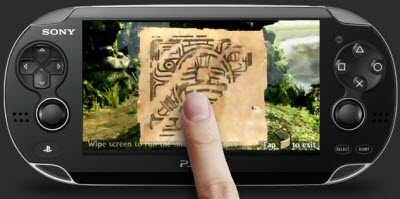 GB: You have to convince people on faith that this is going to be a good thing.
GB: You have to convince people on faith that this is going to be a good thing.
SY: Yes. A leap of faith, and extra money. So we’ve found a much higher ratio of sales for the 3G version against the Wi-Fi version for the Japanese launch, because the core gamers tend to opt for the highest model. But we are coming to see more of a one-to-one kind of sell-through in Japan. That’s how, in the US and Europe, we’ve tweaked it a little bit to sweeten the deal for the 3G SKU. Instead of keeping on saying that 3G is good for you, we added some content that people can immediately see the value of, like adding the memory card, adding free game content to download. The hardware is a bit lower now, so they’re willing to try it.
GB: What do you think are the dynamics in the U.S. market? You mentioned what’s unique for the Japanese market, but here it seems like there’s more interest in smartphones and tablets…the iPads and iPhones.
SY: Smartphones and tablets are as popular in Japan. Very, very popular. But the key difference when you look at the portable game market is, in Japan, portable gaming is actually bigger than the console market. You all must be very aware. It’s a supply and demand thing, if you ask me. Because of a combination of difficulties many Japanese developers, including our own studio, had when shifting from the PS2 era to the PS3 era, upgrading the capability to create very realistic graphics, shaders, multi-core development. They really struggled and stayed behind compared to the U.S. and European developers. So they’re not able to produce as many great console titles in this generation as they used to. Instead, they opted for the PSP or the DS, or now the 3DS, because these platforms, at the core level, the hardware, tech level, were much more familiar and comfortable. People started to see the latest, newest iteration of their favorite games coming to portables. Not on the console.
The result is very predictable: gamers opted for more portable games. It’s a positive cycle that happened in Japan. Publishers saw it and poured more effort into portables. So that’s totally different, as you know, in the states. It’s very difficult to predict or transfer what we’ve seen in Japan to what’s going to happen in the US or Europe.
What’s potentially working for us for PS Vita in the United States, it’s basically two things. One, the kind of games that work really well on PS Vita, the double analog sticks, great graphics on the screen, are the kind of games that people love here. Action-adventures, shooters, FPS. We are betting that games like Uncharted or sports games like FIFA, Madden, Call of Duty, these are games that will lead people to look at the features of portable gaming on PS Vita, to have a great experience even compared to console games. The other thing is, the lineup that we have been preparing. Uncharted, it’s a great title, one of the big franchises, but it doesn’t really work in Japan. SCE Japan marketing is making an effort, so the awareness is going up, but still, Uncharted 3 sold about 200,000 units. It’s very small sales compared to. Call of Duty did like 300,000 or 400,000? And that’s the biggest-selling game made outside Japan. That’s a hard market, when you see something like Monster Hunter selling like four million units, just in Japan. So we were very proud of the fact that we had more than 20 games at the launch of PS Vita in Japan, but when you look at each title, not many of them really catered toward the Japanese market. Not something where Japanese gamers would say, “I have to have that.” I’m really looking forward to the initial sell-through of PS Vita.
GB: How many launch games are there here?
SY: A similar number, like 20…?
Sony PR: 25.
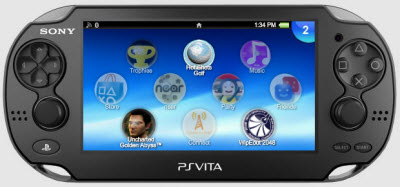 SY: There are games that haven’t come out in Japan yet, like Lumines, and Rayman Origins, that look beautiful. Escape Plan, from one of our teams. I’m waiting to see that in U.S. stores, because we haven’t put that out…
SY: There are games that haven’t come out in Japan yet, like Lumines, and Rayman Origins, that look beautiful. Escape Plan, from one of our teams. I’m waiting to see that in U.S. stores, because we haven’t put that out…
GB: I’m curious about the shooters, because they don’t really work that well on the iPad. You don’t have enough control mechanisms on the iPad, while the PS Vita has plenty. And I’m very interested in Uncharted, where you could do the last part with the tilting, the aiming…
SY: Yeah, it’s very easy and intuitive. After playing through Uncharted: Golden Abyss on PS Vita, when you go back to play Uncharted, you’re kind of doing that on the console. For me, I’m a big game fan, but I’m not a good player necessarily. I find that the tilting is easier, especially for fine-tuning.
GB: And that’s differentiating, you can’t really do that on another device.
SY: Yeah, yeah. Please write about that! [Laughs]
GB: Well, I’ve got to play it first. [More laughs]
SY: You haven’t got one yet?
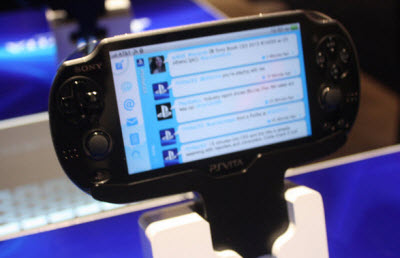 GB: That’s interesting, because it helps justify why there’s, what…17 different ways to control a game?
GB: That’s interesting, because it helps justify why there’s, what…17 different ways to control a game?
SY: We’re not really putting it front and center, but we’re also working on applications like Twitter or Flickr. These social applications are really important, and it works really well on PS Vita. The PS Vita has the system software capability to take screenshots of games. Developers can lock that out, but most games, many games allow you to take screenshots on PS Vita and save them to the unit and tweet with that screenshot as an attachment. When we released the PS Vita in Japan, many people tweeted that this was how Sully looked, or Nathan. That’s integrated, it’s easy to do. Everybody has a smartphone and you can do Twitter, but if it’s that easy to do Twitter and talk about things and attach screenshots, people will use it. That’s our theory. And especially, this screen works really well with the Flickr application.
GB: There is a rumor that the iPad 3 might come out in the first week of March or so. If something like that happens, how does the PS Vita stay in the center of attention?
SY: Yeah, from the tech bloggers, they’re always chasing the latest and greatest… But the PS Vita is somewhat cheaper than an iPad 3 would be. It’s not been announced, but… And the PS Vita also plays great games, so the kind of people we’re targeting, we’re targeting people who really want to play games, and also would like to have cool gadgets. We believe that once we create some very unique and strong experiences, people will find the value in having another device. Even if you may have an iPad, you might be convinced to have another device that plays games really well and does other stuff that you do every day as well. You might decide, when you’re on a trip or going to school, you could choose to have the iPad, but it’s a bit bigger or heavier, while you can put the PS Vita in your jacket pocket.
GB: You also talk about the choices that gamers are going to have, about how to get games here. I guess there’s the typical 40-dollar purchase, there’s the downloadable…
SY: Yes, small titles.
GB: And that’s up against the 99-cent games, free games…
SY: Yeah, that’s a big challenge. In the software industry, that’s one of the biggest questions, I’d say. At least one of the biggest questions that I have myself. We have a theory that if we create really compelling, engaging experiences that you can spend hours with, you’ll see the value of spending 40 dolars against one dollar. The good thing about $1 games is that people are not spending too much money on them. If you buy 40 of those, you might be spending $40, but still… Or many games are free? Gamers love all kinds of games. I totally understand people who like games like Angry Birds, but if you’re a gamer, you’re also interested in trying different kinds of experiences, bigger games.
You saw Nintendo’s 3DS, it had many software hits last December, like Mario Kart. That’s the theory. That’s what I’d like to see proven, after the launch of PS Vita. I can see, looking at the games in game stores, when you see games that you feel you can find on the iPod or iPad for five dollars, why should you spend 40 dollars? So software publishers will really have to think hard when they approach pricing their software. Is this the experience that will compel people to spend that much? Or is this something they should provide for more accessible prices, so that people will try it?
For PS Vita, I’m not the marketing department, but we engage with them in talking about content and pricing, and you’ll find out when we launch… For the past consoles, we had a pretty rigid price range we kept to. This is a full-price game, $60, this is a Greatest Hits, $30. Like that. But for PS Vita, you’ll see games that sell for $50, $40, $30. And on the digital, $45, $35, $23,$15, $10, and $5. A very wide variety of pricing. We’re looking at each title and the value and scope of the content, and trying to match people’s value perception with the pricing. We are not just focused on big-budget, AAA, $40 titles. We’re big fans of the smaller experience as well.
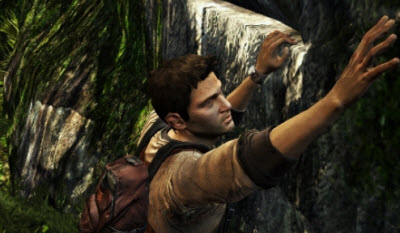 GB: Is the demand for 3G models about the same for Wi-Fi-only models in Japan?
GB: Is the demand for 3G models about the same for Wi-Fi-only models in Japan?
SY: Yeah, sell-through is good. About one-to-one. Japan is also making an effort to communicate the value of 3G. One game that’s only available in Japan, very unique and interesting, is called Monster Radar? Monster Radar uses the GPS, it has maps integrated, so it’s a map-mashup software. In each location, like a convention center or a restaurant or the barber shop, has a monster. You carry your PS Vita and capture these monsters. Each monster is tagged with where it was born, and you can raise it and trade with your friends. It’s very cute. So this game is great, you’re compelled to carry your PS Vita around. If you’re going to the zoo with your family, “Oh, there’s a monster!” The zoo monster, you can only capture it at the zoo.
Kids love the AR, too. They’re captivated by the AR. It uses the AR, you look for a spot in the zoo where the monster’s floating there. It makes a good family experience as well. Another thing, many teams are doing different experiments with the 3G features. For example, this is the Katamari. Each game has this Live Area. You see other people giving you challenges. With 3G… You can get challenges through the Wi-Fi, but if you have 3G, you can get challenges from other people everywhere. We make it easy for developers to support that feature, using an application called Near. So you start this UI and you can get all the goods that are dropped in that vicinity, three or four kilometers. You can find other people who are playing Vita and you can look at the ranking of which games are popular. And here are discoveries that you can find. What are those good that other people are dropping and giving me?
This is ModNation Racers, right? Someone dropped a button for me to use in-game. I can download that. All this can be done through Wi-Fi, but having 3G makes it a bit more interesting. It adds to the discovery. Especially… With friends, you can see them anywhere, but using Near, you can find other gamers around where you live or work. Of course, you can mask where you actually live, there is a privacy scheme, but if you go somewhere like Shibuya or downtown San Francisco, you can find other people who may have the same kind of taste in games, that you might want to become friends with.
GB: How many games do you want to have by the end of the year, then?
SY: We’ve been saying over 100 games in development. From a first-quality standpoint, we have about five or six games at launch, day one, and following up with two or three monthly. A pretty healthy pace. We’re hoping that third parties will catch up on the number of titles as well. I’m very excited about what EA has done with FIFA at launch. It’s very beautiful, and the integration of touch to navigate the kicking. These experiments sound customized, but really, we have console-like quality in our third-party games.
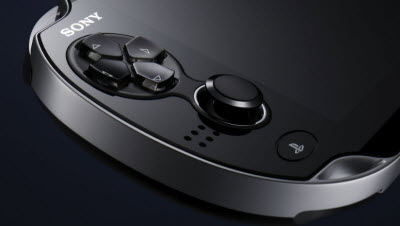 GB: You can get PSP games to work on the Vita?
GB: You can get PSP games to work on the Vita?
SY: Yeah, yeah. Absolutely. It’s not 100 percent as yet, but it’s pretty close. 90-plus percent of PSP games work. Some of these games look pretty nice. Let’s see…once you have purchased the PS Vita version of PSP games, you can re-download them to your PS Vita for free. There is digital rights management (DRM), as far as the number of units, but most people haven’t reached that limit.
Or you can purchase PSP games in the U.S. These days they are pretty inexpensive. I was checking the store yesterday and I found that Final Fantasy Tactics is sold for $10 here. It’s a great value. So you can play PSP games with this much bigger screen, with great colors, and you can re-map the controls when you hold the screen. There are different options, you can apply a filter to smooth out the edges, or you can remove it. You can apply different options to the right analog, too. In many games, because the PSP has no right analog, they assign these four buttons as camera movement.
Like Metal Gear Peace Walker. The game has to slow down significantly because it’s cumbersome to use. That can be assigned to the right analog, so you can control it like a console game. It’s much easier to play. Or other games, like Monster Hunter, map the camera to the direction buttons. When you play Monster Hunter you can map the digital to the right analog. Also, you can use the Vita camera… PSP has the attachment, but it’s integrated here, and it’s compatible. And if you really want to maintain the original PSP LCD colors, it’s a bit limited, but you can set that as well. PSP games are not just playable, but they’re enhanced. And of course loading is much quicker. All things considered, the PS Vita is the best way to play PSP games. If you have the digital versions. For which I apologize, we weren’t able to bring the UMD over.
So what have you been following the most this year? Potential announcements from other platform holders? Or something more like the cloud gaming, or social?
GB: I’m very curious about iPad 3 and which way they’re going to go with it. Apple TV is still slightly foggy. I have to guess that Microsoft will say something at E3 and then ship it next year. The NPD numbers yesterday were not so good, but gaming itself is expanding so rapidly everywhere. I think that means that 2012 turns out to be a good year. Not for everybody but for a lot of different players.
SY: Even in the past couple of years, the industry has still been growing. If you just look at the console space, it’s kind of stagnant, but…
GB: It’ll be interesting to see what happens if somebody tries to take away the used-game market. Technically it might be doable, but….
SY: If everything is online, there are no used games.
GB: Lots of different things could happen that could change the industry. It’s getting more and more unpredictable.
SY: Well, that’s how you keep yourself busy, right?
[photo credit: Dean Takahashi; image credits: Sony]
VentureBeat's mission is to be a digital town square for technical decision-makers to gain knowledge about transformative enterprise technology and transact. Learn More
